Indoor plants have been popular for centuries, adding natural beauty to homes and offices while also providing a variety of benefits such as air purification, stress reduction, and mood improvement. While many indoor plants are grown in soil, there is also a growing trend of growing plants in water, also known as hydroponic gardening.

Hydroponic gardening is a soilless method of growing plants that uses water as the main growing medium. This method of growing plants in water is not only easy and low-maintenance, but it also eliminates the need for soil and can be a great alternative for those with limited outdoor space.
Easy-to-Grow Indoor Plants in Water
In this article, we will explore some of the best indoor plants that can be grown in water, their benefits, and how to propagate and care for them.
1. Lucky Bamboo
Lucky bamboo (Dracaena sanderiana) is an easy-to-care-for plant grown in water. Many cultures often consider it a symbol of good luck and prosperity. Lucky bamboo prefers bright, indirect light and should be watered regularly.
While lucky bamboo is often grown in water, it can also be grown in soil.

However, it is important to change the water regularly to prevent stagnation and bacterial growth if grown in water.
Time to Propagate: Lucky bamboo usually takes 4-6 weeks to develop roots in water, and new shoots should emerge within 2-4 months.
2. Chinese Evergreen
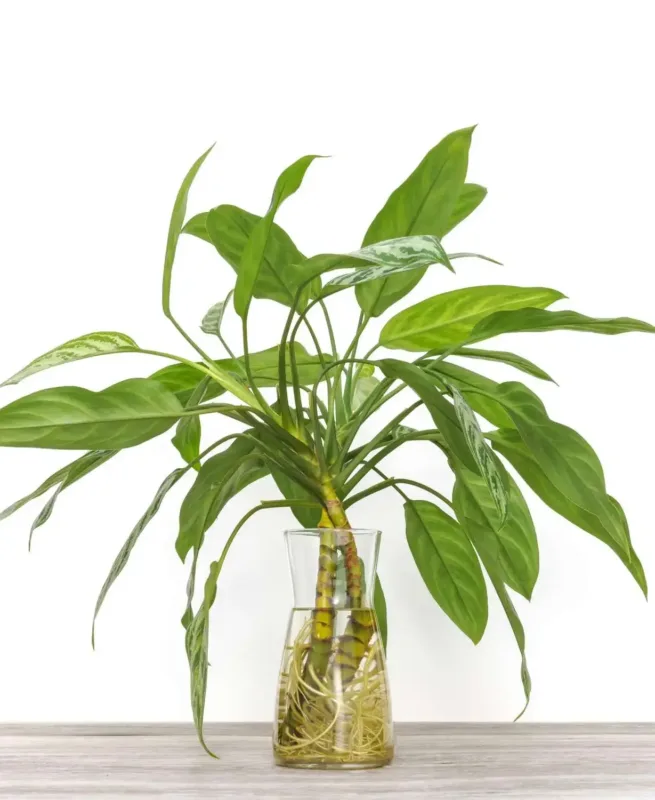
Chinese evergreen(Aglaonema) is a popular indoor plant known for its attractive foliage and easy care. Stem cuttings may be used to grow it in water by putting them in a container with fresh water.
Chinese evergreen prefers low to bright, indirect light and should be watered when the top inch of soil feels dry.
Time to Propagate: It usually takes around 4-6 weeks for roots to form in water, and new shoots should emerge within 2-4 months.
3. Peace lily Plant
Peace lilies (Spathiphyllum) are popular for their appealing foliage and stunning white flowers. Benefits of Peace Lily include their ability to be easily propagated in water through stem cuttings placed in freshwater containers.
These plants thrive in bright, indirect light and should be watered when the top inch of soil becomes dry.
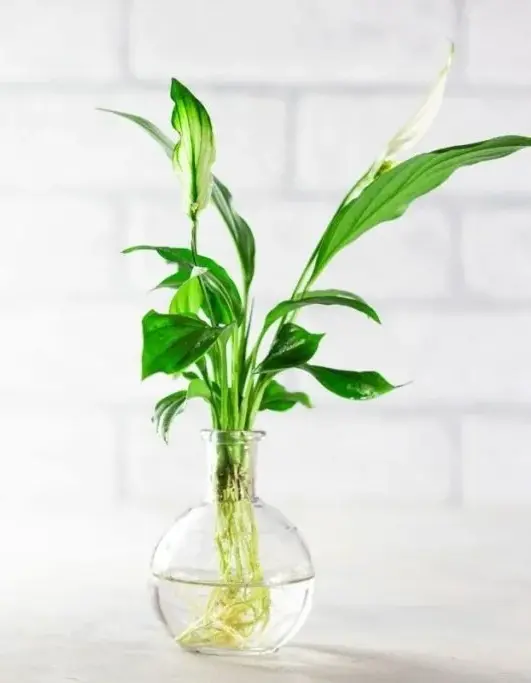
Time to Propagate: In water, roots typically form in 4-6 weeks, and new shoots should appear in 3–4 months.
4. English Ivy
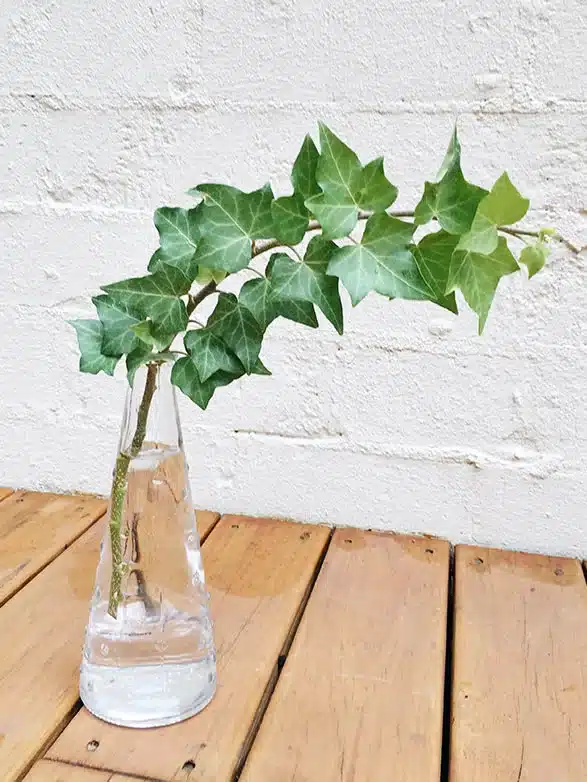
English ivy (Hedera helix) is a trailing vine with attractive foliage that can be propagated in water by taking stem cuttings and placing them in a container with fresh water.
English ivy prefers bright, indirect light and should be watered when the top inch of soil feels dry.
Time to Propagate: Roots typically take 2-3 weeks to form in water, and new shoots should appear in 1-2 months.
5. Philodendron
Philodendrons are popular indoor plants with attractive foliage that can be propagated in water by placing stem cuttings in a container with fresh water.
Philodendrons prefer bright, indirect light and should be watered when the top inch of soil feels dry.
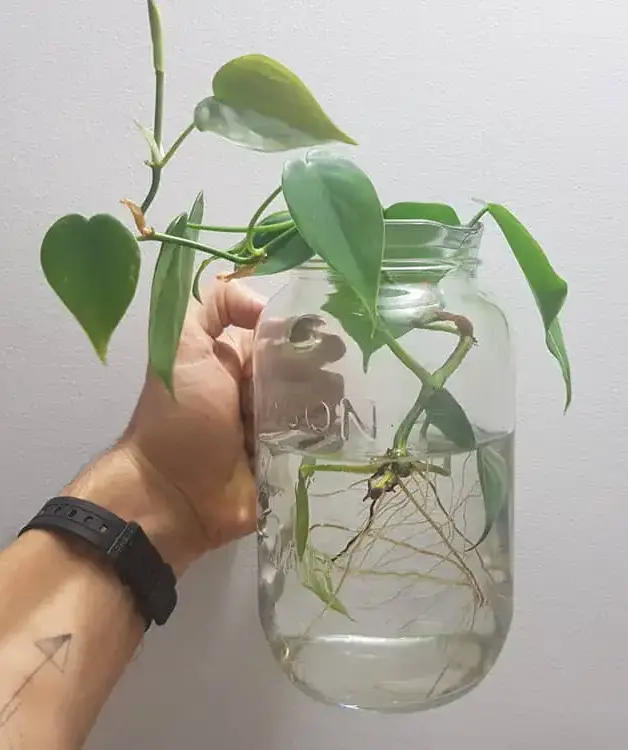
Time to Propagate: It usually takes around 4-6 weeks for roots to form in water, and new shoots should emerge within 2-3 months.
6. Snake Plants
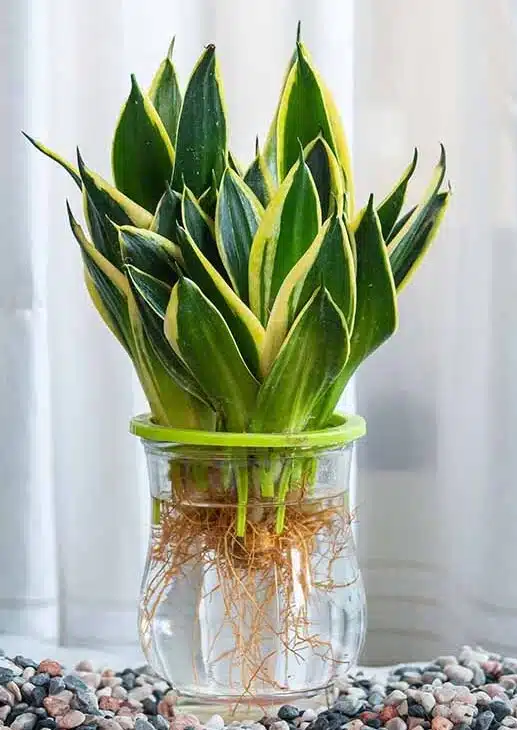
Snake plant (Sansevieria) are known for their tall, upright leaves and easy care. Propagation of snake plants is quite easy and can be grown in water by placing leaf cuttings in a container with fresh water.
Snake plants prefer bright, indirect light and should be watered when the soil is arid. It is important not to over-water snake plants, as they are susceptible to root rot.
Time to Propagate: It usually takes around 4-6 weeks for roots to form in water, and new shoots should emerge within 2-3 months.
7. Syngonium Plants
Syngonium plants, also known as Arrowhead plants (Syngonium podophyllum), are admired for their distinctive arrowhead-shaped leaves and trailing growth pattern.
Benefits of Syngonium plants include their ability to be easily propagated in water through stem cuttings immersed in a container of fresh water.
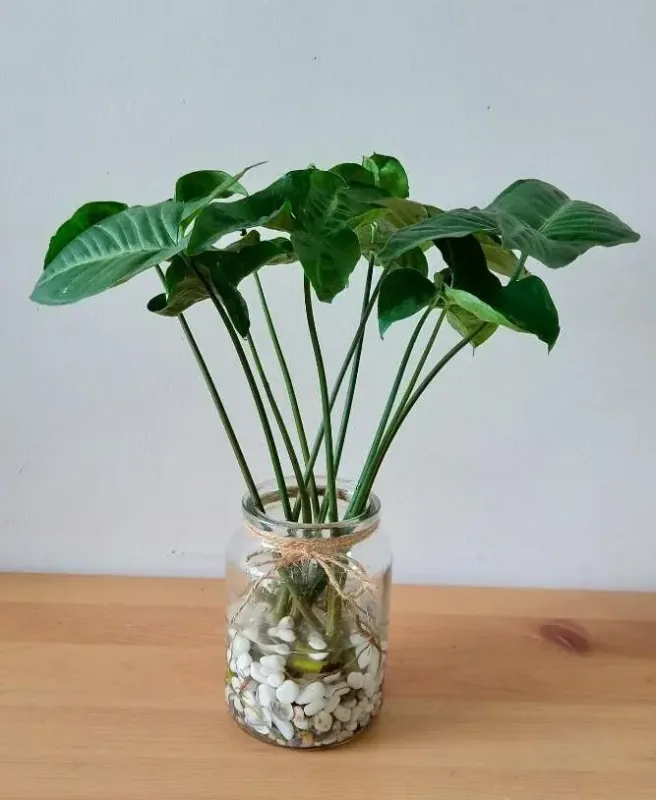
These plants thrive in well-draining soil and prefer bright, indirect light. Additionally, there are various types of Syngonium plants with unique leaf patterns and colors, adding to their appeal.
Time to Propagate: It generally takes around 2-3 weeks for roots to form, and new shoots should emerge within 2-3 months.
8. Spider plants
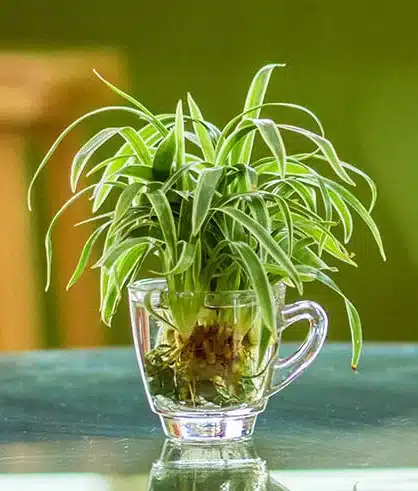
Spider plant (Chlorophytum comosum) are popular indoor plants that produce long, trailing stems with small plantlets at the ends. These plantlets can be easily propagated in water by placing them in freshwater containers.
Spider plants prefer bright, indirect light and should be watered regularly.
Time to Propagate: Takes around 2-3 weeks for roots to form, and new shoots should emerge within 1-2 months.
9. Wandering Jew
Wandering Jew (Tradescantia zebrina) is a trailing plant with colorful, variegated foliage. This plant can be propagated in water by placing stem cuttings in a container with fresh water.
Wandering Jews prefer bright, indirect light and should be watered regularly.
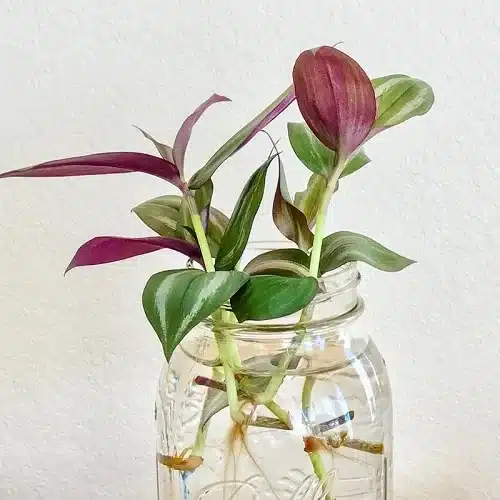
Time to Propagate: It usually takes around 2-3 weeks for roots to form, and new shoots should emerge within 2-3 months.
10. Pothos
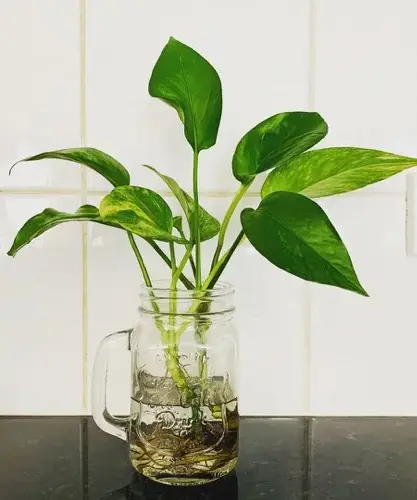
Pothos (Epipremnum aureum) is a popular indoor plant with heart-shaped leaves and a trailing habit. These plants can be propagated in water by taking stem cuttings and placing them in freshwater containers.
Pothos prefer bright, indirect light and can tolerate low-light conditions.
Time to Propagate: Takes around 2-3 weeks for roots to form, and new shoots should emerge within 2-3 months.
11. Begonia
Begonias are popular indoor plants with attractive foliage and colorful flowers. These plants can be propagated in water by placing stem or leaf cuttings in a container with fresh water.
Begonias prefer bright, indirect light and should be watered regularly.
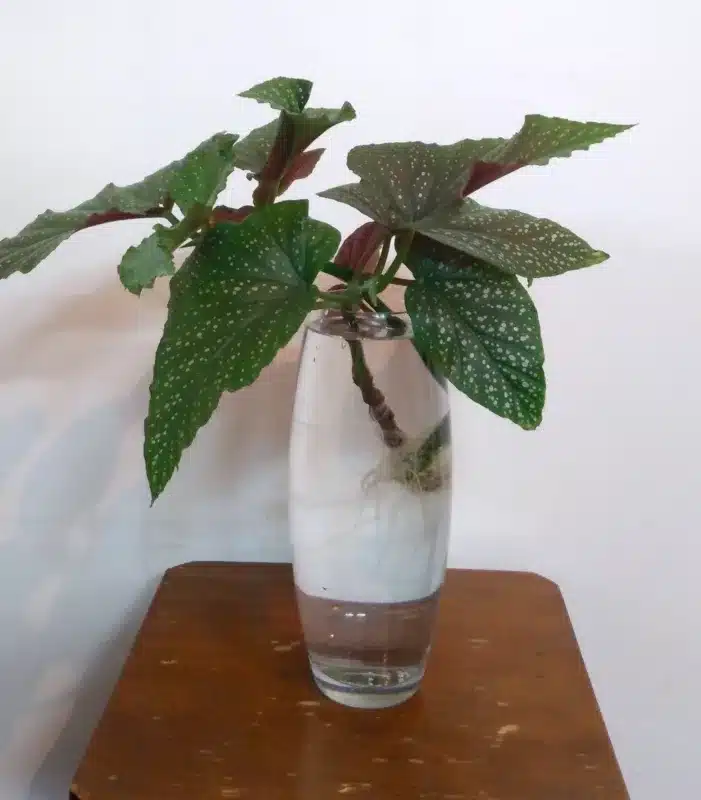
Time to Propagate: Roots usually take 2-3 weeks to form, and new shoots should emerge within 2-3 months.
Caring Tips for Indoor Plants while Propagate in Water
here are some general tips for caring for indoor plants that grow in water:
- Change the water regularly: To prevent stagnation and bacterial growth, it is important to change the water in your plant’s container regularly. Depending on the plant and its size, this could be once a week or every few weeks.
- Use filtered or distilled water: Tap water can contain chlorine and other chemicals that may harm your plants over time. Using filtered or distilled water can help to ensure that your plants are getting clean, healthy water.
- Keep the water level consistent: It is important to keep the water level in your plant’s container consistent. Make sure that the roots are always submerged in water and that the water level is not too high or too low.
- Provide adequate light: Most indoor plants that grow in water require bright, indirect light to thrive. Place your plants near a window or provide them with artificial light if necessary.
- Add nutrients to the water: Plants that grow in water may require additional nutrients to thrive. You can add liquid plant food or hydroponic nutrients to the water to help your plants grow and stay healthy.
- Monitor for pests: Even indoor plants can fall victim to pests such as spider mites and mealybugs. Keep an eye out for signs of infestation and take action if necessary.
By following these general care tips, you can help your indoor plants thrive in water and enjoy their natural beauty and benefits for years to come.
Common FAQs
Q1: Can all indoor plants be grown in water?
Not all indoor plants can be grown in water. Some plants are more suited for hydroponic gardening than others. Plants with woody stems or large root systems may not be as successful in water as smaller, more flexible plants. However, there are many indoor plants that can be grown in water, such as pothos, philodendrons, and snake plants.
Q2: How often do I need to change the water in my plant’s container?
The frequency of changing the water in your plant’s container will depend on the plant and its size. Some plants may need their water changed once a week, while others can go a few weeks between changes. It is important to keep an eye on the water quality and change it when it becomes murky or starts to smell.
Q3: Do indoor plants that grow in water need fertilizer?
Most indoor plants that grow in water will benefit from regular fertilization. Since plants are not receiving nutrients from the soil, it is important to provide them with a balanced fertilizer to help them thrive.
You can add liquid plant food or hydroponic nutrients to the water to ensure that your plants are getting the nutrients they need. Be sure to follow the instructions on the fertilizer label and avoid over-fertilizing, which can harm your plants.
